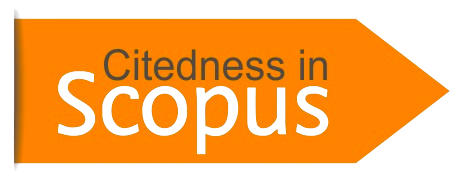Pendekatan Bermain untuk Menurunkan Perilaku Menghindar pada Anak yang Mengalami Trauma Pengobatan
DOI:
https://doi.org/10.15575/psy.v3i1.1099Keywords:
playing method, avoidance behaviors, chronic, traumatic, childrenAbstract
Trauma is emotional response that involve intense fear, helplessness, or horror. Trauma raises three reactions i.e. disrupt memory, avoidance behavior and emergence of physical disorders. Children love games. This study aimed to test the effect of the playing approach against avoidance behaviors in a child with treatment trauma due to chronic disease. This study used a quasi experimental by Single Subject Randomized Time Series Design. The research subject was a seven years old child who suffering chronic Lyme disease with a fist size swelling in her face who showed avoidance behaviour trauma. Lego, drawing, folding, and story telling have been choosen as playing approach. The avoidance behaviour were observed consists of treatment avoidance and laboratory avoidance. The data were analyzed using descriptive statistical analysis in the form of graphs. The results shown that playing method had lowering effect in both avoidance behaviors.Â
References
Alfiyanti, D., Hartiti, T., & Samiasih, Amin. (2007). Pengaruh terapi bermain terhadap tingkat kecemasan anak usia prasekolah selama tindakan keperawatan di ruang Lukman RS Roemani Semarang. Jurnal Keperawatan, 1(1), 35-44, diakses dari http://jurnal.unimus.ac.id
Alwi, dkk. (2005). Kamus besar bahasa indonesia. Jakarta: Departemen Pendidikan Nasional Balai Pustaka
Andriana, D. (2011). Tumbuh kembang dan terapi bermain pada anak. Jakarta: Salemba Medika
Bachri, S. B. (2005). Penembangan kegiatan bercerita, teknik, dan prosedurnya. Jakarta: Departemen Pendidikan dan Kebudayaan
Cook, G. C. (1993). Manson’s tropical diseases. London: W.B. Saunders Company
Prasetyono, D. S. (2007). Membedah psikologi bermain anak. Yoyakarta: Think
Graziano, A. M., Raulin, M. L. (2000). Research methods a process of inquiry (4th ed.). Boston: Allyn & Bacon
Hurlock, E. (2004). Psikologi perkembangan. Jakarta: PT. Gramedia Pustaka
Lonergan, B. A. (1999). The development of trauma therapist: A qualitative studi of the therapist’s perspectives and experiences. Colorado: Counselling Psychology.
Moeslichatoen. (2004). Metode pengajaran. Jakarta: Rineka Cipta
Nurhayati, Y. (2010). Bermain dengan media lego. Yogyakarta: Diva Press
Piaget, J. P.. (1999). Dreams and imitation in childhood. New York: WW. Norton & Company
Ray. (2007). Impact of play therapy on parent child relationship stress at a mental health training setting. British Journal of Guidance & Cuonselling, 36(2)
Romawati, T. (2014) Penerapan metode bcm (bermain, cerita, menyanyi) dalam pembelajaran pai untuk meningkatkan keaktifan siswa kelompoka tk masyitoh greges semester 2 tahun 2013/2014. Skripsi tidak diterbitkan. Fakultas Tarbiyah dan Keuruan UIN Sunan Kali Jaga Yoyakarta. Diakses melalui http://digilib.uin-suka.ac.id
Soetjiningsih. (2002). Tumbuh kembang anak. Jakarta: EGC.
Stamm, B. H. (1999). Secondary traumatic stress. self care issues for clinicians, researchers & educators. MD: Sidran Press.
Strickland, G. T. (2000). Hunter’s tropical medicine and emerging infectious diseases (8th ed.). New York: W.B Saunders Company
Sugiyono. (2013). Metode penelitian pendidikan: Pendekatan kuantitatif, kualitatif, dan R & D. Bandung: Alfabeta
Tedjasaputra. (2001). Bermain mainan untuk anak usia dini. Jakarta: Gasindo
Whaley & Wong. (2002). Pedoman klinis keperawatan pediatrik. Jakarta: EGC
Downloads
Published
Issue
Section
Citation Check
License
The author whose published manuscript approved the following provisions:
1. The right of publication of all material published in the journal / published on the E-Journal of Psychology website is held by the editorial board with the knowledge of the author (moral right remains the author of the script).
2. The formal legal provisions for access to digital articles of this electronic journal are subject to the terms of the Creative Commons Attribution-ShareAlike license (CC BY-SA), which means that the Journal of Psychology reserves the right to save, transmit media / format, manage in database form, , maintain, and publish articles without requesting permission from the Author as long as it continues to include the name of the Author as the owner of Copyright.
3. Printed and published print and electronic manuscripts are open access for any purposes. In addition to these objectives, the editorial board shall not be liable for violations of copyright law.
Â






